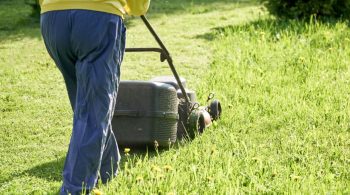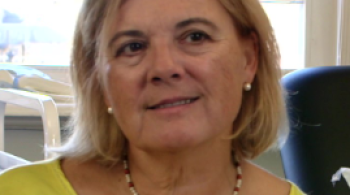- Rotator Cuff Tendinopathy
- Shoulder Labral Tears or Degeneration
- AC Joint Separation
Shoulder Stem Cell and PRP Treatment and Therapy
Have you been told your only option for shoulder pain is steroid injections or joint replacement surgery?
Minimally invasive regenerative alternatives offer pain relief and can help you get your lifestyle back
The shoulder is one of the strongest joints in the body and is essential for almost any activity. Stem cell therapy, AMPP® Activated Mesenchymal Pericyte Plasma (using Lipogems® technology) and Platelet Rich Plasma (PRP) treatment can help people suffering from shoulder pain and provide an alternative to shoulder replacement surgery.
Upper limb orthopaedic consultant, Mr. Ali Noorani explains
Rotator Cuff injuries: How PRP and Lipogems can help
Shoulder replacement: Why is it the last resort?
Many shoulder injuries are sports-related including dislocations, fractures and rotator cuff damage.
The rotator cuff is made up of muscles and tendons which connect the upper arm bone to the shoulder blade. The tendons and muscles hold the upper arm bone into the shoulder socket. This structure produces the greatest range of motion of any joint in the body.
The rotator cuff helps you lift and rotate your arm but the rotator cuff tendons can tear or get pinched by the bones around them.
Shoulder pain is also caused by bursitis. This is when the bursa, a sac filled with fluid which sits between your rotator cuff and your shoulder joint, becomes inflamed.
Osteoarthritis is the most common type of arthritis found in the shoulder. Osteoarthritis is caused by wear and tear when the smooth cartilage which covers the ends of the bones gets worn away. There are two shoulder joints which can be affected by osteoarthritis – the glenohumeral joint which provides most of the shoulder motion and the acromioclavicular (AC) joint which is a smaller joint at the top of the shoulder. People who have arthritis in the AC joint are at risk of developing rotator cuff tears.
Initially, shoulder injuries may be treated with anti-inflammatory medicines, physiotherapy, and corticosteroid injections. Depending on the injury, rotator cuff or shoulder replacement surgery may be recommended.
Stem cell therapy, AMPP® Activated Mesenchymal Pericyte Plasma (using Lipogems® technology) and Platelet Rich Plasma (PRP) treatment can be used to treat a number of shoulder conditions and provide an alternative to surgery. Shoulder surgery is challenging because of the complexity of the joint and post-operative recovery can be painful.
People who choose stem cell therapy, AMPP® Activated Mesenchymal Pericyte Plasma (using Lipogems® technology) and Platelet Rich Plasma (PRP) treatment typically have a much quicker recovery, less post-operative pain and a return to normal activities sooner.
This day case treatment is exclusively offered to our patients. It uses pioneering technology using your body’s own adipose (fat) cells to treat pain and inflammation with MFAT Injections. Injections using MFAT Injections are minimally invasive and are carried out under ultrasound guidance. Altogether the procedure takes about an hour to perform with a minimal recovery time. As well as being a potential alternative to surgery, MFAT Injections can also aid post-surgery recovery.
Read Angela’s story who had this treatment in her knees. She is now pain free and her life has changed completely.
PRP therapy supports your body’s self-healing processes by using your own cells. Blood is mostly liquid (called plasma) but also contains solid component including red cells, white cells and platelets. The platelets are important for clotting blood but they also contain proteins called growth factors which are important in the healing of injuries.
With a higher concentration of growth factors than typically found in blood, PRP injections support the restoration of injured tissue and inhibit painful inflammatory processes.
This treatment is widely researched and supported in clinical papers. See our PRP evidence section.
Click to find out more about AMPP® or PRP treatments or make an appointment with one of our specialist orthopaedic consultants. Our expert team works as part of a collaborative partnership of Surgeons, Sports Medicine doctors and Physiotherapists to provide the perfect patient pathway to get you quickly on the road to recovery. Whether you require conventional treatment or if you are a candidate for these new regenerative treatments, you can be sure that will get the best advice from teaching hospital specialists.
Bone Marrow Aspirate Concentrate (BMAC) is a non-surgical, minimally invasive, regenerative treatment that harnesses the natural ability to heal the body through the assistance of biological growth factors. BMAC utilises the regenerative stem cells collected from bone marrow to aid in the acceleration of healing moderate to severe osteoarthritis and tendon injuries.
Bone marrow is extracted from the pelvis bone with a large needle and syringe under local anaesthetics. The harvested bone marrow is then processed into its separate components. The plasma, containing beneficial proteins, is filtered and condensed into a general fluid concentrate (GFC). Similarly, a fraction of the harvested marrow containing mesenchymal stem cells is concentrated into BMAC. Once processed, the BMAC and GFC are separately injected into the joint after sterile preparation and local anaesthetic is applied.
The injection offers:
- Pain relief
- Reduce swelling
- Increase joint function
- Improve condition of joint cartilage




